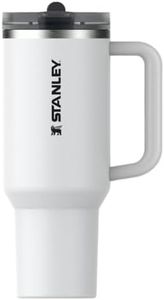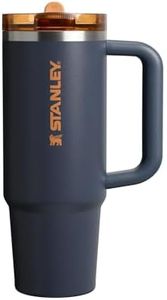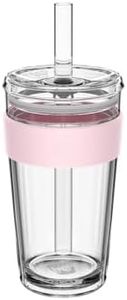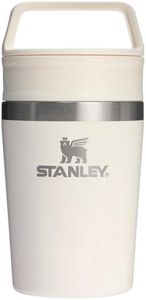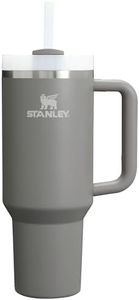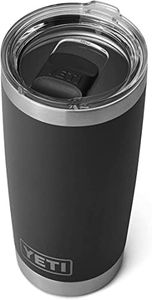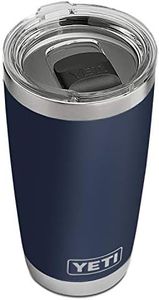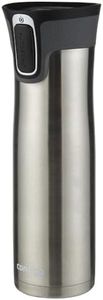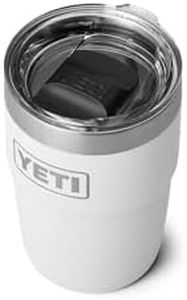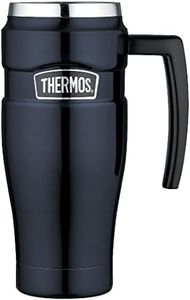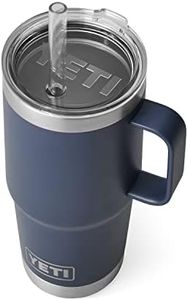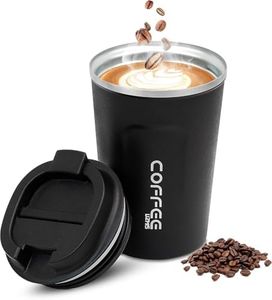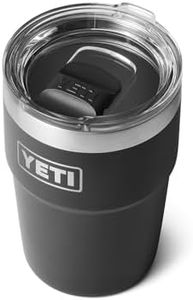We Use CookiesWe use cookies to enhance the security, performance,
functionality and for analytical and promotional activities. By continuing to browse this site you
are agreeing to our privacy policy
10 Best Insulated Cups
From leading brands and best sellers available on the web.By clicking on a link to a third party's website, log data is shared with that third party.
Buying Guide for the Best Insulated Cups
Choosing the right insulated cup can make a big difference in how you enjoy your hot or cold drinks when you're on the go. With many options on the market, it's essential to focus on a few important features that will impact how well the cup suits your daily habits and lifestyle. Understanding the key specifications will help you make a choice that keeps your beverages at the right temperature and matches your preferences for convenience and durability.Insulation TypeInsulation type refers to how the cup keeps your beverages hot or cold. Common types are single-wall, double-wall, and vacuum insulation. Single-wall cups offer no true insulation and can leave drinks lukewarm quickly, while double-wall cups create a basic barrier against temperature change. Vacuum insulation is most effective, as it uses an airless space to drastically slow heat transfer. If you need your drinks to stay hot or cold for hours, choose vacuum insulated cups; for short-term or indoor use, a double-wall might be enough.
MaterialInsulated cups can be made from stainless steel, plastic, glass, or a combination of these. Stainless steel is the most popular for durability, resistance to flavor retention, and insulation performance. Plastic is lighter but may retain smells or stains, and glass offers purity of taste but is more fragile. If you expect rough handling or want to avoid absorbing flavors, go with stainless steel; for at-home use a glass or high-quality plastic cup might suit you.
CapacityCapacity refers to how much liquid your cup can hold, usually listed in ounces or milliliters. Small cups (8-12 oz) are good for quick coffee breaks or small drinks, medium sizes (12-20 oz) suit regular coffee or tea needs, and large cups (20 oz and above) are ideal for those who drink a lot throughout the day. Consider how much you typically drink at once and whether you want to refill often; pick a size that matches your personal consumption without becoming too bulky to carry.
Lid TypeThe type of lid affects both convenience and spill resistance. Simple push-on lids are easy to use but may leak, while screw-on or locking lids provide better spill protection, especially for travel. Some lids have drink-through openings, sliders, or even straws. If you'll be walking or commuting, look for leak-proof or locking lids; for use at a desk or home, a simple slip lid may be more convenient.
Ease of CleaningThis specifies how simple it is to wash the cup and lid parts. Cups with wide openings and minimal crevices are easier to clean, and dishwasher-safe models offer convenience. If you'll use your cup often or for different beverages (like coffee and tea), choose one that's easy to take apart and clean thoroughly to avoid lingering flavors and bacteria.
Weight and PortabilityWeight and portability matter if you plan to carry your cup around daily. Heavier cups, often made of thick stainless steel, can get cumbersome, while lighter plastic or thin metal cups are easier to tote but may not insulate as well. If you’re always on the move, balance insulation needs with a manageable weight and shape that fits your hand or bag comfortably.
